Gym Machines You Should Never Use and Their Safer Alternatives
Let's be clear: Not all fitness equipment is created equal. While most machines have their pros, depending on your goals and fitness level, there are some gym machines you should never use if you want to build a functional, pain-free body. Exercise machines were invented to provide a safe alternative to free weights, but sometimes they’re anything but. As a matter of fact, if you're not careful, they can put your body into unnatural positions and take your joints through dangerous ranges of motion if you're not careful. Over time, this can lead to muscle strain and even serious injuries.So, to make the most of your next sweat session, avoid these nine machines and instead use the alternative exercises for safer, more effective training.Gym Machines You Should Skip and Their Safer Alternatives Beth Bischoff 1. Seated Twist Machine These ab machines can cause problems with the lower back (lumbar spine) because they rotate the area beyond a safe range of motion, and most people use momentum over controlled muscle activation. Your lower back can generate twisting movements (spinal rotation), but not nearly as much as it can flex and extend. Your lumbar spine can only twist about 10 degrees—5 degrees in each direction. Turning beyond that puts a massive strain on your vertebrae, which, combined with the machine's resistance, can quickly become more than your back can bear, leading to pain and injuries in the facet joints and lumbar discs.Your lower back provides stability and has thicker intervertebral discs to help. To boost your rotational strength, pick core exercises that keep your spine stable and your core rigid. Your internal and external obliques, multifidus (deep spinal muscles), and erector spinae are all muscles that assist with twisting, so working them in a natural range of motion is best for preventing back pain.Exercises to Try InsteadSide plankPallof pressAnti-rotational cable chopRussian twists with a medicine ball or weight plateTips for Safe UseIf you have a strong core with excellent core control, you can use the seated twist machine with proper form, limiting the range of motion. Focus on controlled reps and mind-muscle connection rather than momentum or heavy loads.If a physical therapist is treating you during rehabilitation, they might use the ab twist machine for specific reasons. Only use it under their guidance to be safe.Related: 7 Ways to Improve Flexibility2. Back Extension MachineThe back extension bench is a time-tested core builder, but its mechanical twin is the black sheep of back exercises. Since the machine has a fixed path, it doesn't allow for a natural movement pattern. Plus, repeatedly flexing your lower back under a load can cause injury to the lumbar discs due to excessive shear forces. And the rigid position the machine holds you in doesn’t allow your core, glutes, and hamstrings to contract as they should to protect you.Instead, strengthen your lower back with exercises that force you to maintain the natural arch of your lumbar spine.Exercises to Try InsteadBodyweight back extensionBent over row (shown in the picture above)Stiff-leg deadliftGood morningsHip thrustsTips for Safe Use Avoid hyperextending your back and move slowly, with control using light weight.Avoid the machine entirely if you have back issues.3. Seated Situp Machine If you have lower back pain, avoid seated ab machinesGetty Images/LUNAMARINA Think twice about doing any situp if you have a weak core or experience lower back pain. The tendency to yank your neck forward, round your shoulders, and flex your spine is too dangerous for some people to bother with, especially if they sit at desks for long periods. Situps of any kind increase compressive loads on the lower back and can be too risky for anyone with a weak or painful lower back. They also put too much emphasis on the hip flexors which can make your hips and lower back feel tight.To blast your core safely, use exercises that train it to resist flexion and extension and stay stable.Exercises to Try InsteadPlank with arms on a stability ballBodysaw with Valslides or towels on a wood floor Ab RolloutTips for Safe UseUse control and avoid jerking or using momentum.Engage your core by consciously contracting your ab muscles throughout the movement.Keep your spine in a neutral position with a slight natural curve in your lower back, and don't flatten your back against the pad.Related: Best Functional Strength-Training Workout Experts Swear By4. Smith Machine If you want to improve your bench press, avoid the smith machine.Beth Bischoff While the Smith machine definitely has its uses and benefits, letting you

Let's be clear: Not all fitness equipment is created equal. While most machines have their pros, depending on your goals and fitness level, there are some gym machines you should never use if you want to build a functional, pain-free body.
Exercise machines were invented to provide a safe alternative to free weights, but sometimes they’re anything but. As a matter of fact, if you're not careful, they can put your body into unnatural positions and take your joints through dangerous ranges of motion if you're not careful. Over time, this can lead to muscle strain and even serious injuries.
So, to make the most of your next sweat session, avoid these nine machines and instead use the alternative exercises for safer, more effective training.
Gym Machines You Should Skip and Their Safer Alternatives
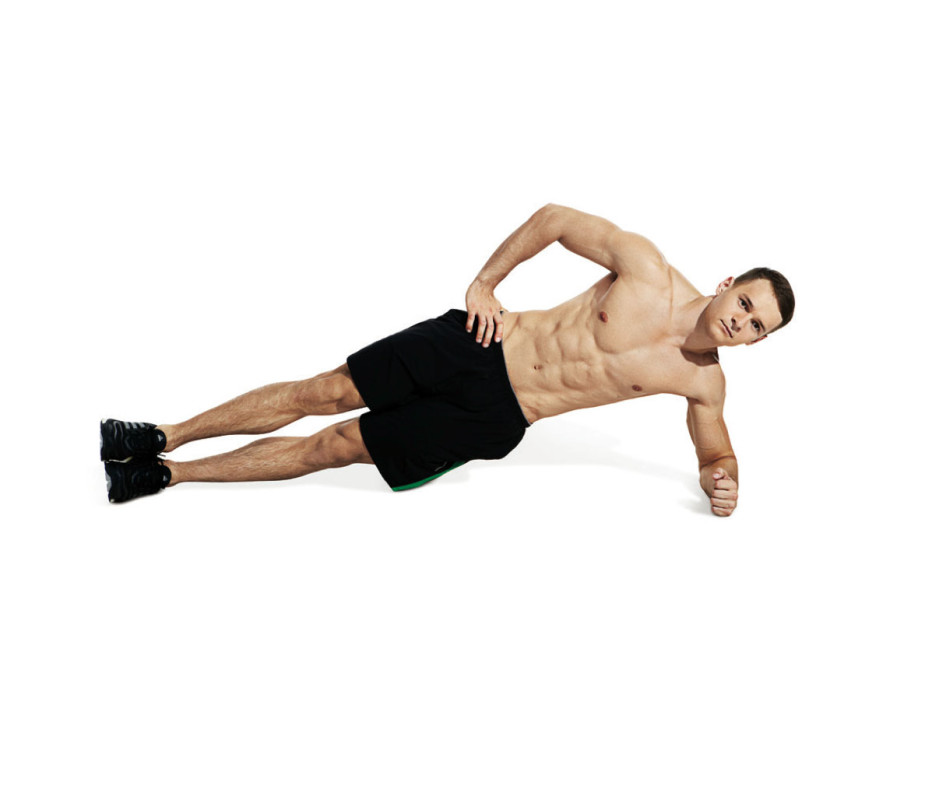
Beth Bischoff
1. Seated Twist Machine
These ab machines can cause problems with the lower back (lumbar spine) because they rotate the area beyond a safe range of motion, and most people use momentum over controlled muscle activation. Your lower back can generate twisting movements (spinal rotation), but not nearly as much as it can flex and extend.
Your lumbar spine can only twist about 10 degrees—5 degrees in each direction. Turning beyond that puts a massive strain on your vertebrae, which, combined with the machine's resistance, can quickly become more than your back can bear, leading to pain and injuries in the facet joints and lumbar discs.
Your lower back provides stability and has thicker intervertebral discs to help. To boost your rotational strength, pick core exercises that keep your spine stable and your core rigid. Your internal and external obliques, multifidus (deep spinal muscles), and erector spinae are all muscles that assist with twisting, so working them in a natural range of motion is best for preventing back pain.
Exercises to Try Instead
- Side plank
- Pallof press
- Anti-rotational cable chop
- Russian twists with a medicine ball or weight plate
Tips for Safe Use
- If you have a strong core with excellent core control, you can use the seated twist machine with proper form, limiting the range of motion. Focus on controlled reps and mind-muscle connection rather than momentum or heavy loads.
- If a physical therapist is treating you during rehabilitation, they might use the ab twist machine for specific reasons. Only use it under their guidance to be safe.
Related: 7 Ways to Improve Flexibility
2. Back Extension Machine
The back extension bench is a time-tested core builder, but its mechanical twin is the black sheep of back exercises. Since the machine has a fixed path, it doesn't allow for a natural movement pattern.
Plus, repeatedly flexing your lower back under a load can cause injury to the lumbar discs due to excessive shear forces. And the rigid position the machine holds you in doesn’t allow your core, glutes, and hamstrings to contract as they should to protect you.
Instead, strengthen your lower back with exercises that force you to maintain the natural arch of your lumbar spine.
Exercises to Try Instead
- Bodyweight back extension
- Bent over row (shown in the picture above)
- Stiff-leg deadlift
- Good mornings
- Hip thrusts
Tips for Safe Use
- Avoid hyperextending your back and move slowly, with control using light weight.
- Avoid the machine entirely if you have back issues.
3. Seated Situp Machine
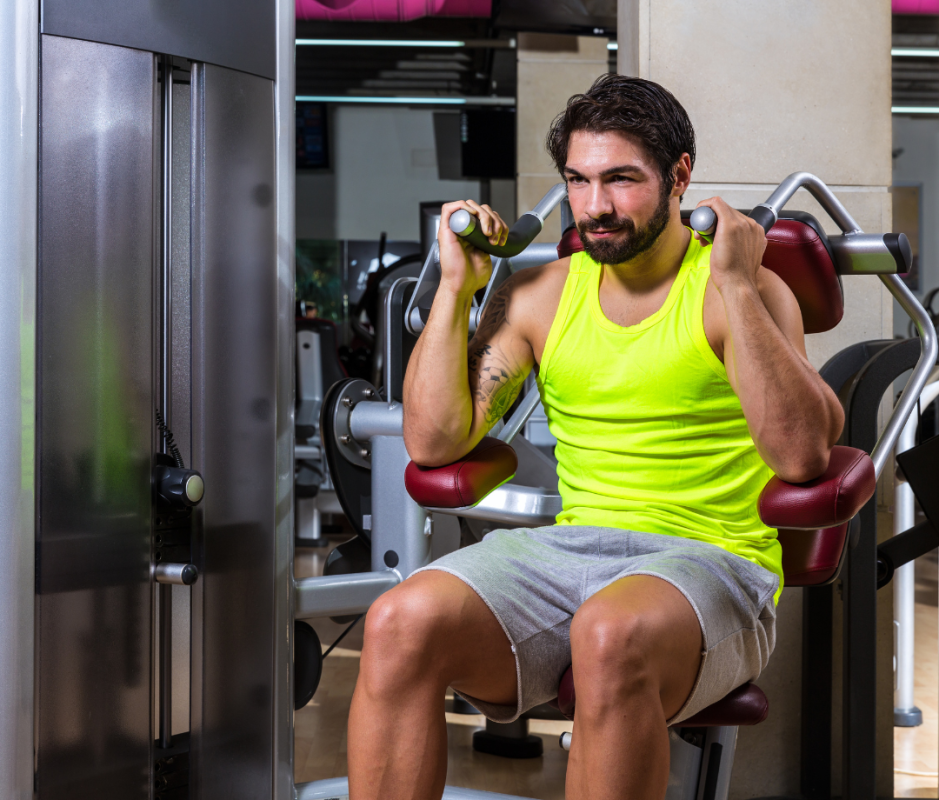
Getty Images/LUNAMARINA
Think twice about doing any situp if you have a weak core or experience lower back pain. The tendency to yank your neck forward, round your shoulders, and flex your spine is too dangerous for some people to bother with, especially if they sit at desks for long periods.
Situps of any kind increase compressive loads on the lower back and can be too risky for anyone with a weak or painful lower back. They also put too much emphasis on the hip flexors which can make your hips and lower back feel tight.
To blast your core safely, use exercises that train it to resist flexion and extension and stay stable.
Exercises to Try Instead
- Plank with arms on a stability ball
- Bodysaw with Valslides or towels on a wood floor
- Ab Rollout
Tips for Safe Use
- Use control and avoid jerking or using momentum.
- Engage your core by consciously contracting your ab muscles throughout the movement.
- Keep your spine in a neutral position with a slight natural curve in your lower back, and don't flatten your back against the pad.
Related: Best Functional Strength-Training Workout Experts Swear By
4. Smith Machine
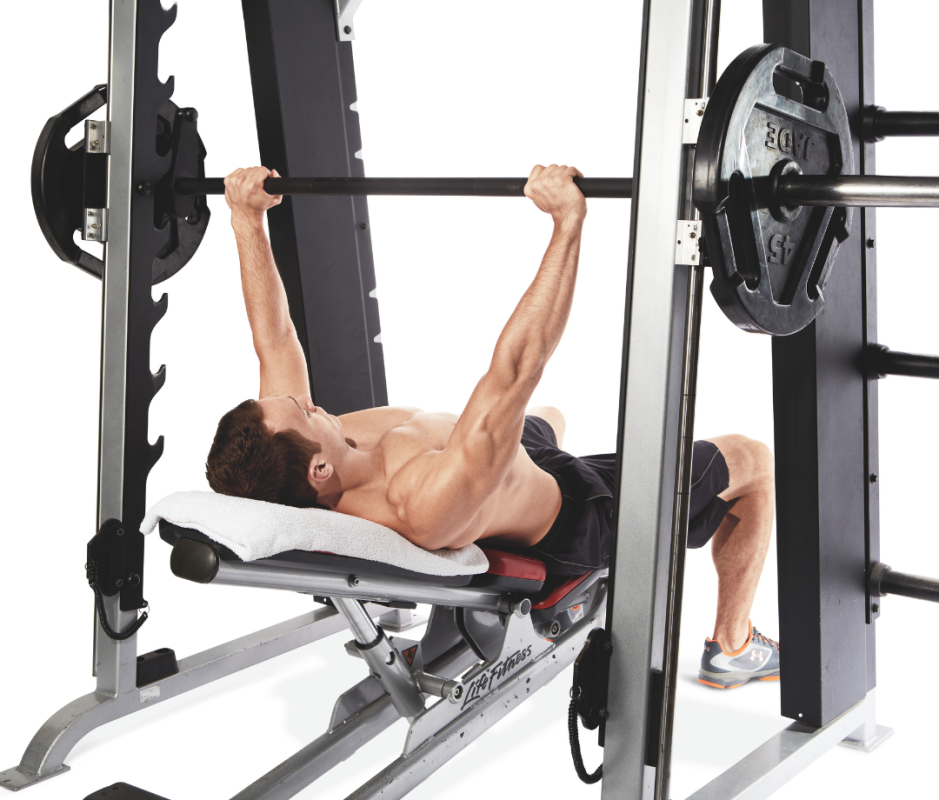
Beth Bischoff
While the Smith machine definitely has its uses and benefits, letting you isolate and target specific muscles without as much fatigue, it's not the best if your goal is to build functional full-body strength. If you want to get stronger in your squats, bench presses, and deadlifts, practice them using a barbell instead.
Although its primary benefit is that you can stop the bar whenever a set gets too heavy, the Smith's bar moves in a fixed path, and that forces your shoulders and elbows into awkward positions and doesn't allow for natural bar paths during compound lifts.
The Smith machine also balances the weight for you, which reduces the tension in your muscles and robs you of strength, stability, and size gains. In an older study published in the Journal of Strength and Conditioning Research, researchers found that bench presses with free weights activated far more muscle than their Smith machine counterparts.
If safety is your concern, use safer variations of the squat, bench press, and deadlift that don't require a barbell or a spotter.
Exercises to Try Instead
- Goblet squat
- Floor press
- Barbell hip thrust (shown in the picture above)
Tips for Safe Use
- Learn proper form with a barbell or other free weights first so you know what the movement should feel like.
- Don't let your body contort to fit the fixed bar path, keep your body in natural alignment.
- Use slow and controlled movements and natural ranges of motion.
5. Pec Deck
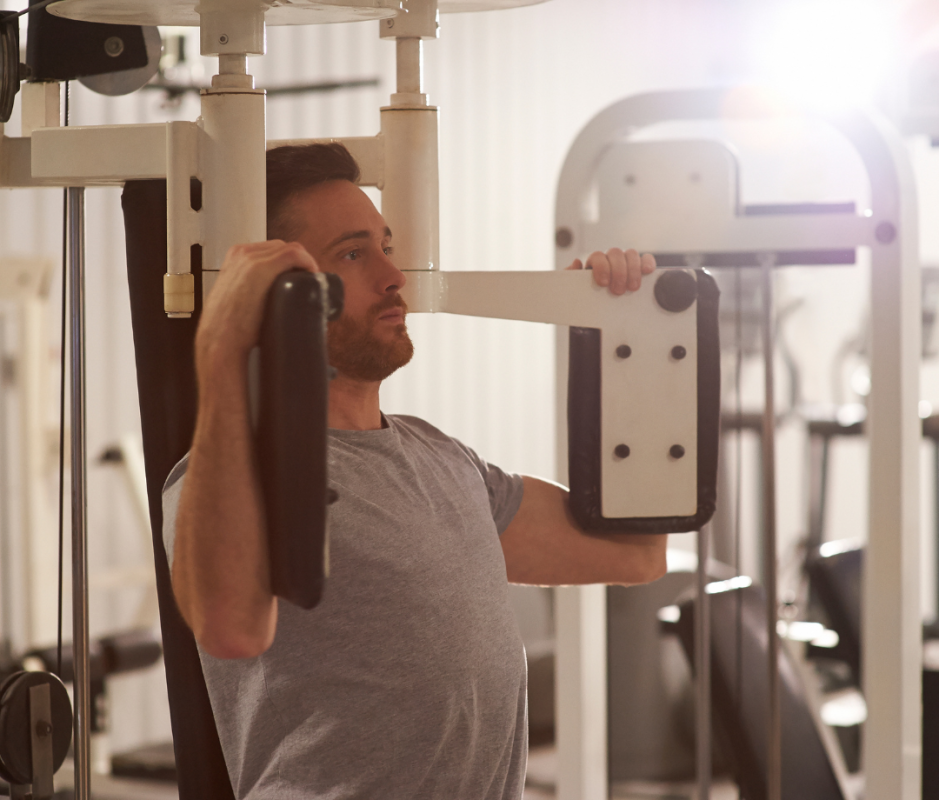
Getty Images/Dougal Waters
If you have limited shoulder mobility or shoulder issues, you'll want to avoid the pec deck. Here’s the main problem: Guys don’t need another exercise to pull their shoulders forward and twist their arms inward. We already spend too much time sitting at our computers and target our chests often enough in the gym. Over time, this pulls our shoulders out of alignment and creates joint impingements.
The pec deck yanks your arms backward as you approach the end of the range of motion, and if you're not careful, when you relax at the end of the set, it can harm your shoulder joints. If you have shoulder issues already, rather than using a machine, stick to free-weight exercises that move in a safe range of motion.
Exercises to Try Instead
- Dumbbell Flye (shown in the picture above)
- Slideboard Flye
- Suspended Flye
Tips for Safe Use
- Keep your elbows slightly below shoulder height with a slight bend.
- Use lighter weights and slow, controlled movements. Going too heavy is the biggest reason this machine puts people at risk.
- Relax your shoulders and resist hunching to avoid excessive internal shoulder rotation.
6. Seated Military Press Machine
If you have limited shoulder mobility or your unique biomechanics make the seated military press machine feel awkward, you should avoid it. For one, you never push overhead in a perfectly straight line—the movement drifts forward and backward, your arms twist, and your body shifts. Machines, however, eliminate that freedom.
And although the seated military press can add muscle to your shoulders, it also spawns shoulder problems because it strains your joints as you reach overhead. If both handles are connected, you can even create imbalances where one arm works harder than the other.
Exercises to Try Instead
- Dumbbell Overhead Press
- Push Press
- Pike Pushup (shown in the picture above)
Tips for Safe Use
- Always use proper form, as you would for a dumbbell or barbell version.
- Don't try to use more weight than you can push with perfect form, and don't use momentum.
- Avoid arching your back, which can lead to lower back pain.
- Don't hunch or let your elbows flare out.
7. Seated Leg Extension
Leg extension machines can help you isolate your quads without all the fatigue that comes from compound lifts like squats, which is a good thing when you're deep into a muscle gain phase. However, unless you have strong legs and use superb form, you can strain your knees, particularly, the patellofemoral joint (where the kneecap meets the thigh bone). When used incorrectly, the seated leg extension places too much torque on your knee joints because it pulls your shins back as you lower the weight.
Also, knee extensions can develop an imbalance between your quads and hamstrings, which causes knee problems. As you move, your quads always work with other muscles, never in isolation—even when you kick a soccer ball, you flex your hips, twist your trunk, and stabilize through your other leg.
Unless you're a more experienced lifter, the best way to strengthen your quads is to involve your entire lower body as well.
Exercises to Try Instead
- Front squat (shown in the picture above)
- Split squat
- Forward lunge
- Leg press
- Step-ups
Tips for Safe Use
- Don't extend your knees forcefully, use slow and controlled movements.
- Avoid hyperextending (locking out) your knees.
- Use a weight that allows for perfect form, don't go too heavy.
- Avoid the machine altogether if you have knee issues like patellofemoral pain syndrome or ligament injuries.
Related: Effective Leg Workouts at Home That Prove You Don't Need a Full Gym to Get Results
8. Leg Curl Machine
Leg curl machines are similar to leg extension machines, which have their place. But similarly, they aren't the best choice if your goal is to build full body functional strength, especially as a beginner. If you don't use proper form or go too heavy, this machine can put too much strain on your knees, particularly the posterior cruciate ligament (PCL).
Your hamstrings work with your glutes to create movement. Seated or prone leg curl machines, however, ignore your glutes, which increases your risk of hamstring pulls and knee injuries. By isolating the hamstrings alone, they become tight and overactive over time, so if you're going to use the leg curl machine, be sure to balance it out with quad and glute exercises.
The best exercises to build strong hamstrings also maintain hip extension and glute activation.
Exercises to Try Instead
- Swiss-ball leg curl or leg curl on a suspension trainer
- Glute-ham raise (shown in the picture above)
- Romanian deadlift
- Good mornings
- Deadlifts
- Kettlebell swings
Tips for Safe Use
- Don't go too heavy or rely on momentum. Go slowly and with control.
- Maintain proper form, engage your core, and beware of your back, especially when using the lying leg curl machine.
- Adjust the machine in a position so that the axis of rotation aligns with your knee joint.
9. Adductor and Abductor Machine
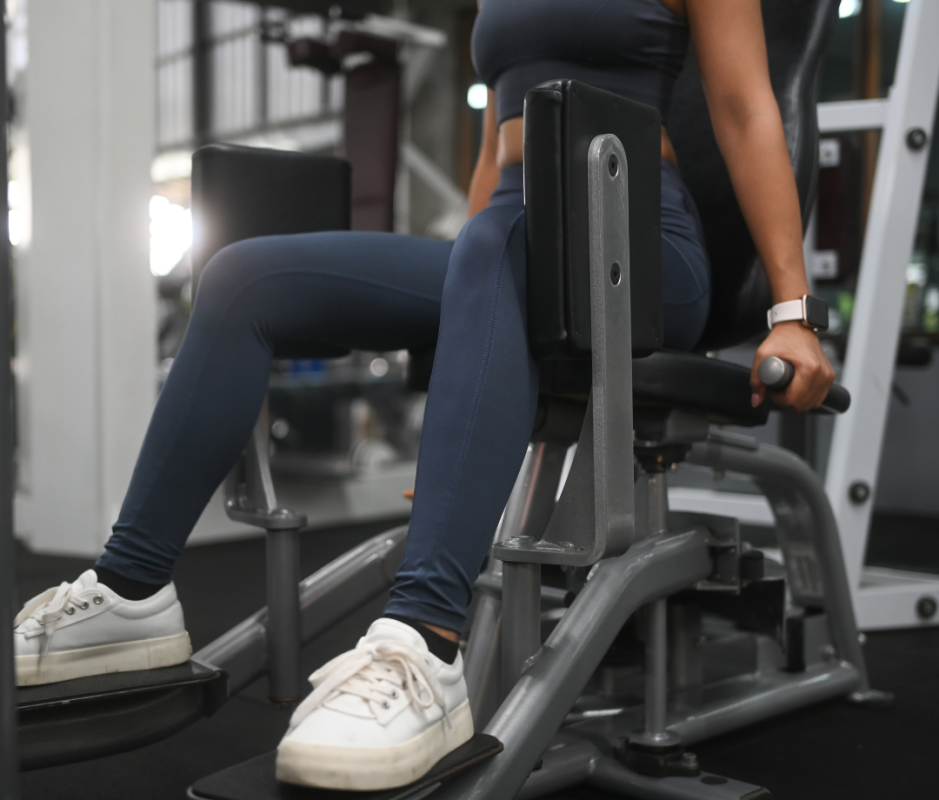
Getty Images/PrathanChorruangsak
Just because an exercise looks weird doesn’t mean it’s bad. (Barbell hip thrusts, for example, look like something you should never do in a gym.)
In this case, however, the seated abductor and adductor machine is both weird and bad if your goal is to build real-world strength. These machines isolate the hip adductors (inner thigh muscles) and abductors (outer thigh muscles) in a way that isn't naturally how these muscles function. In real-life activities like walking, running, and changing direction, they work in combination other muscles to stabilize the hip and pelvis.
As well, by forcing your legs to open and close, you put a lot of stress on your hip capsules and IT bands and can lead to groin strain. A better way to strengthen your abductors and adductors is to stand on one leg: not only are you activating those muscles to keep your leg stable, but you’re also activating your core.
Exercises to Try Instead
- Copenhagen adductor exercise
- Lateral squat
- Single-leg Romanian deadlift
- Single-leg squat
- Sumo deadlift
- Sumo squat
Tips for Safe Use
- Avoid this machine if you have groin pain/strain or limited hip mobility.
- Don't go too heavy or rely on momentum. Go slowly and with control.
- Maintain proper form, engage your core, and keep your spine neutral.
- Adjust the machine in a position so that it aligns with your body mechanics.




























.png)





















![‘Companion’ Ending Breakdown: Director Drew Hancock Tells All About the Film’s Showdown and Potential Sequel: ‘That’s the Future I Want for [Spoiler]’](https://variety.com/wp-content/uploads/2025/02/MCDCOMP_WB028.jpg?#)























